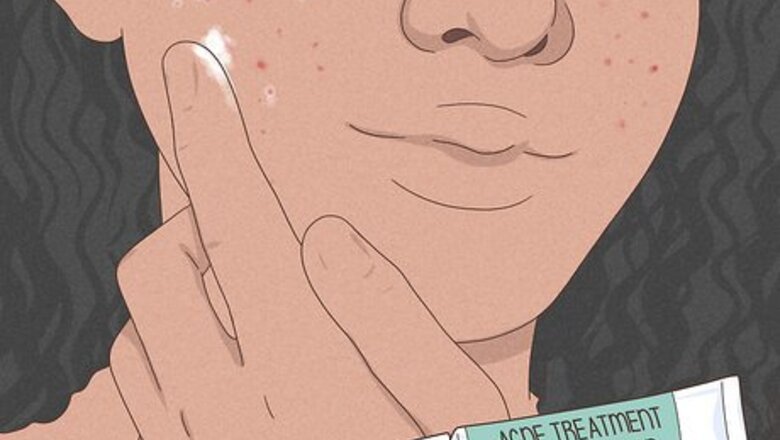
views
Treating Blind Pimples
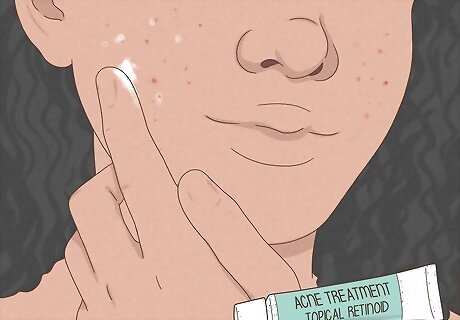
Use a topical cream. One good way to treat a pimple with no head is to use a topical cream. Try a salicylic acid cream, benzoyl peroxide cream, or retinoid cream as part of your treatment regimen. You can also buy face wash containing salicylic acid or benzoyl peroxide, which may work to reduce the swelling and clear up the bacteria causing the pimple. Make sure to follow the directions on the package.
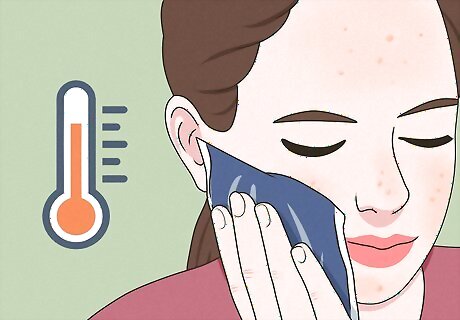
Use a warm compress. Soaking a pimple with no head with warm or hot water can help it come to a head faster, which can make it easier to treat and encourage it to heal faster. Soak a washcloth or a cotton ball in some hot or warm water. Then, press it against the pimple for a few minutes. You can do this three times a day until the pimple comes to a head.

Try an ice compress. Ice is helpful for painful pimples that have no head. The ice can help lessen any soreness under the skin and also help reduce redness and swelling. You can use an ice pack, ice cubes from your freezer, or even a bag of frozen vegetables. Leave the compress on for around 10 minutes. You can do this multiple times a day. Make sure to place some kind of cloth between your face and the ice. This helps prevent any damage to your skin from the ice.
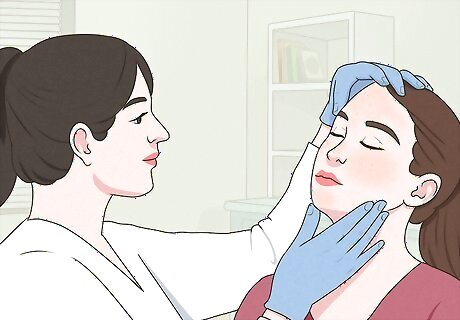
Visit your dermatologist. If you have blind pimples beneath the skin that won’t go away or won’t come to a head, you may want to visit a dermatologist. They can help you find a treatment plan that will get rid of the pimples and help prevent scarring. If none of the at-home methods are working, or the blind pimples are causing you severe pain, you should see your dermatologist. When you talk to your dermatologist, let them know the methods you have tried to get rid of the pimple. There are prescription medications and treatments that are often very effective in treating acne cysts.
Treating Pimples with No Head Naturally
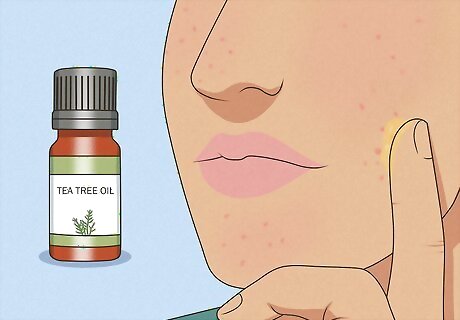
Treat with tea tree oil. Tea tree oil a popular and effective natural remedy to help treat pimples. Tea tree oil provides antimicrobial and anti-inflammatory activity. This means that it can help reduce the swelling of your pimple trapped under the skin, along with fighting the bacteria causing it. Mix one drop of tea tree oil with nine drops of water. You may choose instead to dilute the tea tree oil with an oil instead, such as olive or mineral oil. You can also dilute it with aloe vera gel. Soak a cotton ball or a cotton swab in the tea tree oil mixture. Apply it on the blind pimple. Let it sit for 10 minutes, then rinse your face with warm water. You can do this three times a day. Make sure not to get tea tree oil near your eyes because it can cause irritation. Before you apply tea tree oil to the pimple, test for sensitivity. Apply one drop of tea tree oil to your wrist and wait for about 15 minutes. If you see no reaction, it is safe to use on your pimple.
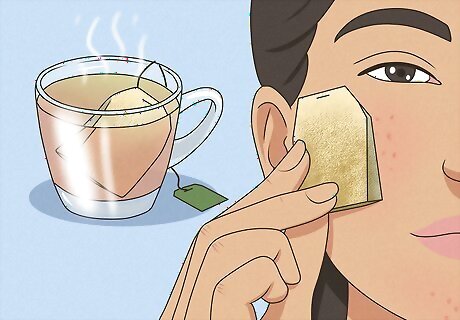
Try a warm tea compress. Tea can be helpful in treating blind pimples. Green tea and black tea both have tannins, which have anti-inflammatory properties. Combined with a warm compress, tea can help reduce the swelling of your pimple. Steep either green or black tea bag in warm water. Remove the tea bag and place it directly on the blind pimple. The tea acts as an astringent, which also helps draws out the pimple.
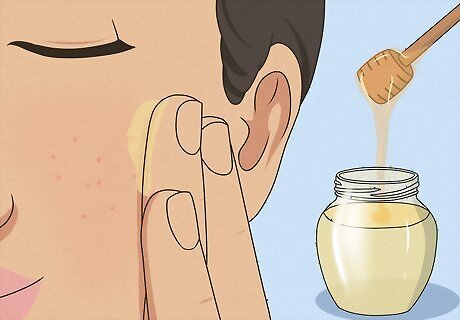
Use honey. Honey is a common home remedy for blind pimples. Honey is antimicrobial and antibacterial, which helps fight the bacteria clogging your pores. Honey also can help nourish and heal your skin. Try spreading honey over the pimple with no head, and leave it there for around 20 minutes. Rinse with warm water. Try making a mask by combining honey with apple pulp. Apples are good for blind pimples because the malic acid is believed to firm the skin. Put a cored apple into a food processor or blender and blend until it turns into pulp. Mix the apple pulp with the honey to form a mask-like paste. Cover the pimple with this and leave it on for up to 20 minutes before washing off.
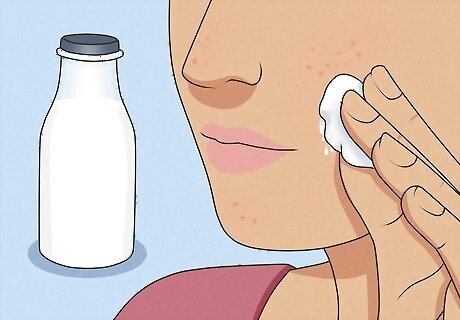
Soak the pimple in milk. Milk is a natural beauty product used in many at-home and folk remedies. Milk has alpha hydroxy acids in its sugars. AHAs can assist in removing dead skin and unclogging pores. This can help your blind pimple by helping to remove the clogged outer layer. This may also help bring the pimple to a head so you can remove the pus from inside. Apply milk directly onto the pimple with no head using a cotton ball. Let the milk stay on for at least 20 minutes before rinsing with warm water. You can do this three or four times a day.
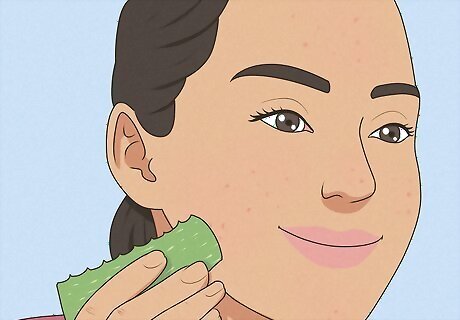
Apply aloe vera. Aloe vera is a great alternative to get rid of blind pimples for those with sensitive skin. Aloe vera is antibacterial and anti-inflammatory, which means it can help reduce the swelling and redness of the pimple and fight the bacteria causing it. You may choose to use the leaf of an aloe vera plant or aloe vera gel. Spread the aloe vera onto the blind pimple and let it sit for around 20 minutes. You can do this up to three times a day.
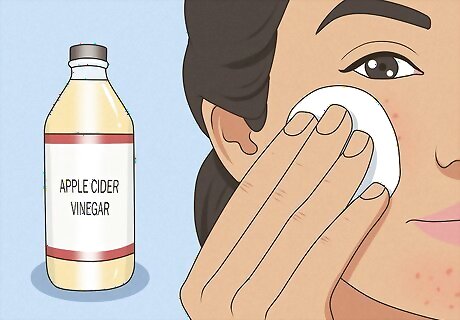
Make an apple cider vinegar toner. Apple cider vinegar has antibacterial and antiseptic properties. This means it can help fight the bacteria causing the pimple and make the pimple come to a head. Apply apple cider vinegar to the pimple using a cotton ball.< If you have sensitive skin, dilute the apple cider vinegar in a ratio of one part vinegar to four parts water before applying it to the pimple.
Cleansing Your Face
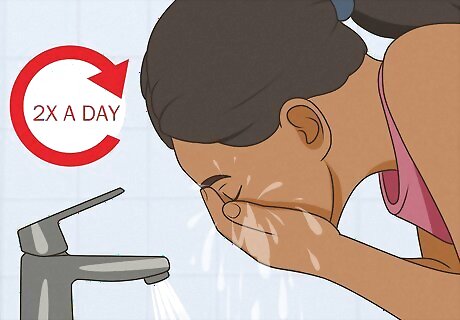
Wash your face twice a day. The best way to prevent blind pimples is proper face hygiene. This means you should wash your face and areas with pimples twice a day. You may want to take a bath or shower once a day to remove dirt and oil from your entire body. Wash your hands before washing your face to reduce bacterial transfer from your hands to your face. Always wash your face after any activities where you sweat a lot. Avoid touching your face as well because this can introduce bacteria to the skin on your face.
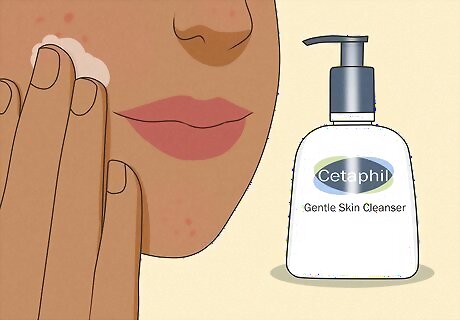
Use a gentle cleanser. If you are having trouble with blind pimples under your skin, cleanse your face with a gentle, plant-oil based product. When choosing a face wash, look for one labeled non-comedogenic. Non-comedogenic products do not lead to the formation of pimples. Examples of non-comedogenic products include Neutrogena, Cetaphil, and Olay. Many store-brand products or generic products are also non-comedogenic. Always check the label to make sure. Use alcohol-free products on your face because alcohol irritates and may damage the skin.
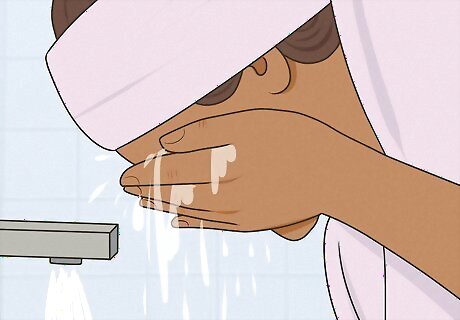
Wash your face with your fingers instead of a cloth. When you wash your face, use your fingertips to wash. Washcloths and sponges may irritate the skin, which can lead to more problems. Massage the face wash gently in a circular motion. Avoid scrubbing your face. This can cause scarring.














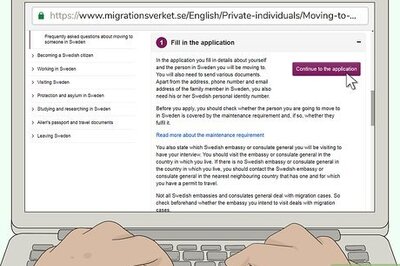

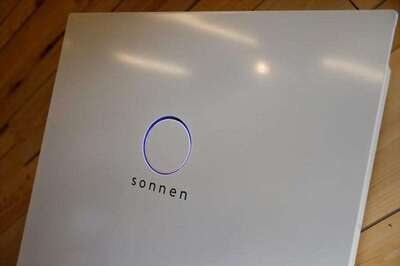

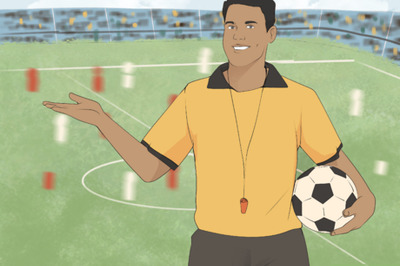

Comments
0 comment